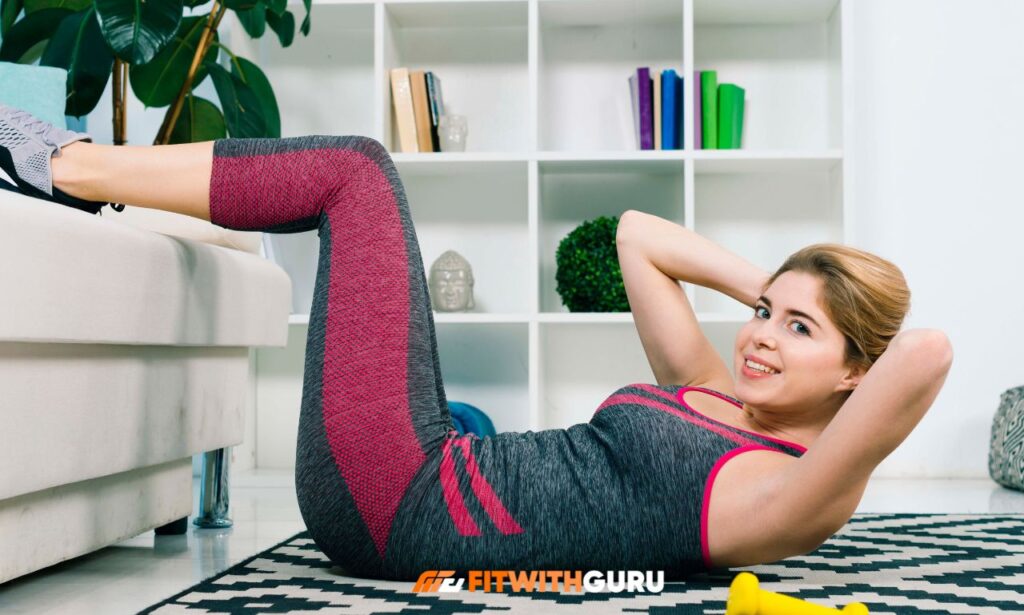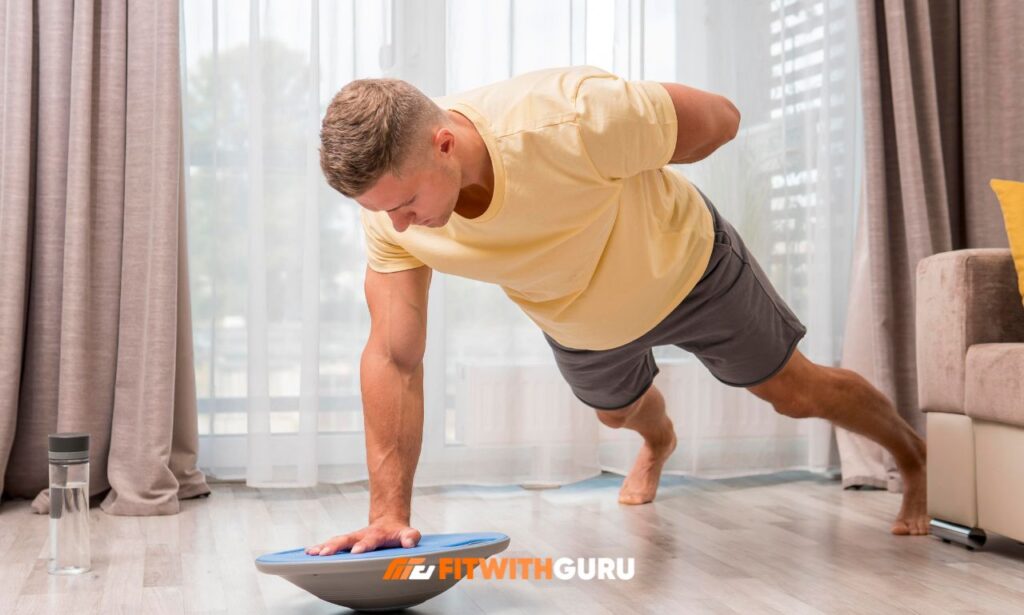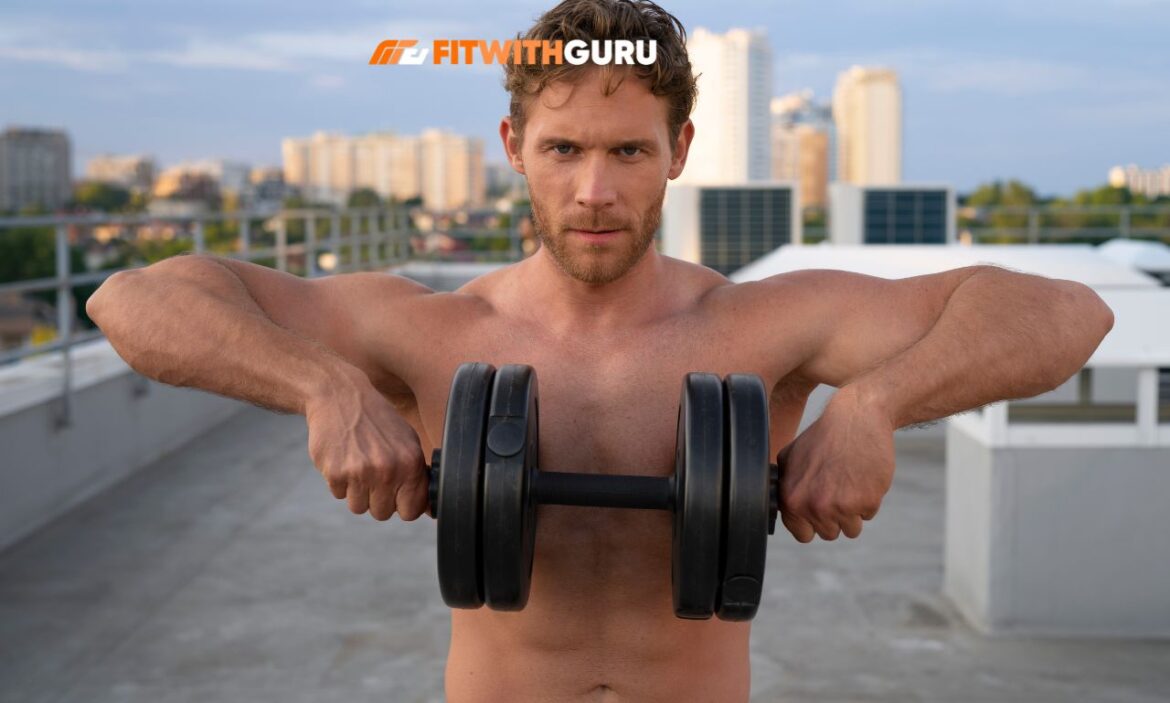
Can you build muscle without weights? Absolutely, and science backs this up completely. Your muscles don’t actually know whether you’re lifting dumbbells, pushing your body against gravity, or moving heavy furniture.
They only understand tension, resistance, and progressive overload. This comprehensive guide will show you exactly how to build impressive muscle mass using nothing but your bodyweight, proper technique, and strategic training principles.
Understanding Muscle Growth: The Science Behind Bodyweight Training
Muscle hypertrophy occurs when you create enough mechanical tension, metabolic stress, and muscle damage to trigger your body’s adaptive response.
Traditional weightlifting achieves this through external resistance, but bodyweight exercises accomplish the same goal by manipulating leverage, tempo, and volume.
Research published in the Journal of Strength and Conditioning Research found that training with bodyweight exercises can produce similar muscle growth to weight training when volume and intensity are matched.
The key lies in progressive overload—continuously challenging your muscles beyond their current capacity.
With bodyweight training, you progress by adjusting angles, increasing repetitions, slowing down movements, or advancing to more difficult exercise variations.
Your bodyweight alone provides substantial resistance, especially when you consider that a standard push-up places approximately 64% of your bodyweight on your upper body muscles.
Can You Build Muscle Without Weights at Home: Creating Your Training Environment
Building muscle at home without equipment is not only possible but incredibly convenient. Your living room can become a fully functional gym with minimal setup.
All you need is enough floor space to lie down with your arms extended, something sturdy to pull yourself up on (like a door frame pull-up bar or sturdy table), and perhaps a chair for elevated exercises.
The beauty of bodyweight training at home is the elimination of commute time, gym fees, and equipment costs. You can train multiple times per day if desired, making it easier to accumulate training volume throughout the week.
Home training also allows for greater experimentation with exercise variations without feeling self-conscious. Many successful bodyweight athletes have built impressive physiques entirely from home training, proving that the environment matters less than consistency and effort.
The pandemic era demonstrated this perfectly when millions of people maintained and even built muscle using only their homes and creativity.
Can You Build Muscle Without Weights for Beginners: Starting Your Journey
Beginners actually have a significant advantage in bodyweight training. Your body is extremely responsive to new training stimuli during the first few months, a phenomenon called “newbie gains.”
During this period, you can build muscle relatively quickly even with basic exercises performed at moderate intensity. Start with fundamental movement patterns: push-ups, squats, lunges, planks, and inverted rows.
These compound movements engage multiple muscle groups simultaneously, creating an efficient hormonal response that promotes muscle growth throughout your entire body. Begin with easier variations if the standard versions feel too challenging.
Incline push-ups against a wall or counter are perfect for building the strength needed for floor push-ups. Box squats or assisted squats holding onto a stable surface help you develop proper form and leg strength.
The progression path for beginners should focus on mastering movement quality before increasing difficulty. Perfect form with 10 repetitions beats sloppy form with 30 repetitions every single time.
Essential Bodyweight Exercises for Maximum Muscle Growth
Upper Body Muscle Builders
Push-ups remain the cornerstone of bodyweight upper body development. Standard push-ups target your chest, shoulders, and triceps, but variations like diamond push-ups, decline push-ups, and archer push-ups shift emphasis to different muscle groups.
Pull-ups and chin-ups are unmatched for back and bicep development. If you can’t perform a full pull-up yet, start with negative pull-ups (jumping up and slowly lowering yourself down) or use resistance bands for assistance.
Dips using parallel bars, chairs, or a sturdy countertop edge provide incredible tricep and chest stimulation. Pike push-ups and handstand push-up progressions develop powerful shoulders and prepare you for advanced inverted movements.
Lower Body Powerhouses
Bodyweight squats build your quads, glutes, and hamstrings when performed with proper depth and control. Progress to pistol squats (single-leg squats) for intense quad development that rivals heavy barbell squats.
Bulgarian split squats using a chair or bench behind you create tremendous tension in your quads and glutes. Nordic hamstring curls are brutally effective for building hamstring mass without any equipment.
Glute bridges and single-leg hip thrusts directly target your glutes with minimal equipment requirements. Calf raises can be performed anywhere, and single-leg variations provide sufficient intensity for muscle growth.
Core Development
Planks and their variations (side planks, plank variations with arm/leg lifts) build foundational core strength. Hanging leg raises and knee raises develop your abs with greater intensity than traditional crunches.
L-sits and hollow body holds create incredible core tension that translates to better performance in all movements. Dragon flags and ab wheel rollouts (using a towel on smooth flooring) represent advanced core exercises that build impressive six-pack development.
Progressive Overload Strategies Without Adding Weight

The biggest challenge in bodyweight training is continuously increasing the difficulty to keep stimulating muscle growth. Here are proven strategies to progressively overload your muscles:
Increase repetitions and sets: Move from 3 sets of 10 reps to 4 sets of 15 reps over several weeks. Slow down the tempo: A 5-second lowering phase creates significantly more muscle tension than a 1-second descent.
Decrease rest periods: Reducing rest from 2 minutes to 90 seconds increases metabolic stress.
Advance to harder variations: Progress from regular push-ups to archer push-ups to one-arm push-ups.
Change leverage angles: Elevating your feet during push-ups increases the percentage of bodyweight you’re lifting.
Add pauses: Pausing at the bottom of a squat for 3 seconds creates additional time under tension.
Increase training frequency: Training muscle groups more frequently throughout the week accumulates greater volume.
Nutrition Strategies to Maximize Muscle Growth: Can You Build Muscle Without Weights
Building muscle without weights still requires proper nutrition to support growth and recovery. Protein intake should range between 0.7-1 gram per pound of bodyweight daily.
This provides sufficient amino acids for muscle protein synthesis following your workouts. Distribute protein intake across 4-5 meals throughout the day for optimal muscle building.
Caloric intake determines whether you can actually build new muscle tissue. Aim for a modest surplus of 200-300 calories above your maintenance level to support muscle growth while minimizing fat gain.
Carbohydrates fuel intense bodyweight training sessions and replenish glycogen stores. Don’t fear carbs—they’re essential for performance and recovery.
Healthy fats support hormone production, including testosterone, which plays a crucial role in muscle development. Include sources like avocados, nuts, olive oil, and fatty fish.
Hydration affects performance more than most people realize. Dehydration of just 2% can significantly impair strength and endurance.
Sample Training Programs for Different Experience Levels
Beginner 3-Day Program
Day 1 – Upper Body Push/Pull:
- Incline push-ups: 3 sets of 10-12
- Inverted rows: 3 sets of 8-10
- Pike push-ups: 3 sets of 8-10
- Plank hold: 3 sets of 30-45 seconds
2 Day – Lower Body:
- Bodyweight squats: 4 sets of 15-20
- Lunges: 3 sets of 10 per leg
- Glute bridges: 3 sets of 15
- Calf raises: 4 sets of 15-20
Day 3 – Full Body:
- Push-ups: 3 sets of 10-12
- Bodyweight squats: 3 sets of 15
- Inverted rows: 3 sets of 8-10
- Bulgarian split squats: 3 sets of 8 per leg
- Plank: 3 sets of 45 seconds
Intermediate 4-Day Program
This program increases volume and introduces more challenging variations for those who have built a foundation of strength.
Split your training across push, pull, legs, and full body days with more exercise variations and higher volume.
Common Mistakes That Prevent Muscle Growth
Rushing through repetitions is perhaps the most common error in bodyweight training. Controlling the eccentric (lowering) phase of each movement creates more muscle damage and tension, leading to better growth.
Neglecting progressive overload keeps your muscles comfortable, which means they have no reason to adapt and grow. You must continuously challenge yourself with harder variations or increased volume.
Insufficient recovery between sessions prevents muscle growth despite hard training. Muscles grow during rest, not during workouts, so prioritize sleep quality and rest days. Ignoring nutrition undermines all your training efforts.
You cannot out-train a poor diet when trying to build muscle. Training with poor form increases injury risk and reduces muscle activation. Perfect technique should always take priority over repetition count or difficulty level.
Frequently Asked Questions
How long does it take to build noticeable muscle without weights?
Most beginners notice visible changes within 6-8 weeks of consistent training and proper nutrition. Significant muscle growth typically becomes apparent after 12-16 weeks.
Your genetics, training consistency, nutrition quality, and recovery habits all influence this timeline. Some individuals respond faster to bodyweight training than others, but everyone can build muscle with dedicated effort.
Can you build as much muscle with bodyweight training as with weights?
Research indicates you can build substantial muscle with bodyweight training, though extremely advanced lifters might find limitations eventually. For most people training for aesthetics, health, and functional strength, bodyweight training provides more than enough stimulus.
Gymnasts demonstrate the impressive muscular development possible through primarily bodyweight training. The key is applying progressive overload principles consistently over time.
What muscles are hardest to develop without weights?
The posterior chain—particularly hamstrings and lower back—can be more challenging without weights. However, exercises like Nordic curls, single-leg deadlifts, and back extensions address these areas effectively.
Some people also find it harder to target specific muscle groups in isolation without equipment. Focus on compound movements that work multiple muscles simultaneously for the best results.
Do I need supplements to build muscle with bodyweight training?
Supplements are not necessary for muscle growth, though protein powder offers convenience for meeting daily protein targets. Creatine monohydrate has strong research support for improving performance and muscle growth.
Prioritize whole foods first, then consider supplements as additions rather than replacements. Most supplements marketed for muscle building provide minimal benefits compared to proper training and nutrition.
How many days per week should I train for optimal muscle growth?
Training each muscle group 2-3 times per week produces optimal results for most people. This might mean 3-5 total training days depending on your program structure. Full-body workouts three times weekly work excellently for beginners and intermediates. More advanced trainees might benefit from higher frequency with properly managed volume and recovery.
Conclusion
Building muscle without weights is not only possible—it’s a proven, effective approach that has worked for countless individuals worldwide. The principles of muscle growth remain constant regardless of whether you’re using barbells or your bodyweight.
Mechanical tension, metabolic stress, progressive overload, and adequate recovery drive muscle hypertrophy in all training contexts. Bodyweight training offers unique advantages including convenience, lower injury risk, improved body awareness, and functional strength that transfers to real-world movements.
Start with fundamental exercises, focus on perfect form, progressively increase difficulty, and fuel your body with adequate nutrition. Consistency matters more than perfection, and the best workout program is the one you’ll actually stick with long-term.
Your journey to building muscle without weights begins with a single push-up, squat, or pull-up. The path forward requires patience, dedication, and trust in the process, but the results will speak for themselves.
Whether you’re training at home as a beginner or you’re an experienced athlete exploring bodyweight methods, the potential for building impressive muscle is entirely within your reach.

